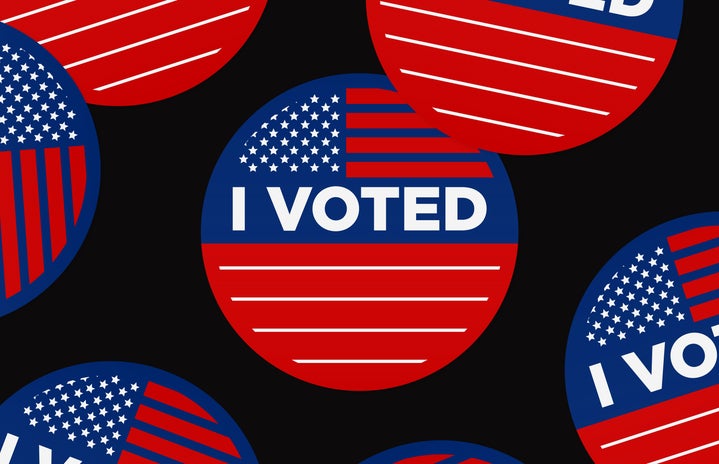Every four years, Americans vote for president. On November 3, they will choose between the democrat, Joe Biden and the republican, Donald Trump. But how does the running, voting and electoral systems of the United States work? Check out some aspects and curiosities of the country’s politics!
- Voting is Optional, Indirect and Secret
-
In the United States, voting is secret and also an option, which means that campaigns are not only focused on winning people over, but also on convincing them to vote. A large portion of the country’s population shows little commitment to the elections. The face-to-face vote traditionally takes place on the Tuesday following the first Monday in November.
In addition, the vote is indirect, it is not credited directly to the candidate, but to the political representatives to be chosen, which in the case of the United States are the electors. Although the votes in each state is given to a specific candidate, it basically elect the electors from the Electoral College, who will represent the entire population of each state in the final choice of the future president. But don’t worry! We will explain it a little further in this article.
- Election Primaries and Caucus
-
In the election previews, there’s process to choose the presidential candidate, announced at the National Convention of each party after caucus and primaries held all over the country. In the primaries, the government of each state runs an election with the name of the pre-candidates. To win the nomination, the candidate needs the majority of delegates. They vote according to how the candidate did in their state primaries.
The number of delegates of each state is according to the number of population. In a state like Florida, the number of delegates is bigger than in Iowa. But, the sequence of states in the primaries makes all the difference. Even with the low number of delegates, Iowa, being the first state in the primaries, has an important role, once the number of candidates in the party decreases in the early states.
At Super Tuesday, generally between February and March, several states make their primaries and caucus at the same day, which means around one third of the total of delegates from each party is in game. That’s a thermometer to know the support every name running for the nomination has. In 2020, two days after the Super Tuesday, there were only three pre-candidates left between the 11 that were in the competition: Bernie Sanders, Joe Biden and Tulsi Gabbard.
- The Electoral College
-
Each state has a number of electors proportional to the local population and the number of parliamentarians who represent them in the House of Representatives and the Senate. This way, the Electoral College gathers 538 electors, which is the sum of the number of senators (100), deputies (435) and more voters representing Washington D.C (3). To win the election, the candidate must receive the vote of 270 electors at least.
Because of the different numbers of electors in each state, they have a different importance in the election. California, for example, has 55 electors and it’s the state with the largest number of representatives in the Electoral College. Meanwhile, Washington D.C. is the least decisive state with only 3 electors.
States have different ways of deciding who will be the electors. The Republican and Democratic parties define who will be the electors that will form the Electoral College. The choice can be made through a party committee; a vote at the party’s state convention; candidate or governor, as in the case of Florida. Then a list of possible electors is made for each party.
- The Winner Takes All
-
Basically, the candidate who wins in a state gets the votes of all electors, regardless of whether he/her has won the majority of the US population’s votes or not. The winner takes all!
This rule is valid in 48 states and Washington DC, with the exception of Nebraska and Maine, where votes can be divided. At the Electoral College, electors are not required to follow the state’s indication, but traditionally obey it. The final election at the Electoral College usually takes place in December.
- The Swing States
-
It is possible to identify how each state traditionally votes for the Democratic and Republican candidate and to estimate which candidate will have more electors, through a national mapping. They are called blue states for the democrats, and red states for the republicans. But some states don’t have a clear favorite, these are the so-called swing states, they vary according to the political situation. Arizona, Michigan, Pennsylvania, Wisconsin and North Carolina are examples of swing states, they tend to attract more effort and campaign money and, in highly disputed elections, are decisive in the final result.
In recent years Florida has also varied, the state is one of the most decisive, with 29 votes in the Electoral College. In 2000, the majority of the population voted for the Republican candidate Bush, but in 2008 they chose the Democrat Barack Obama.
- The Number of Vote Does Not Always Decide
-
A presidential candidate can be elected even without the absolute number of citizens’ votes, if they obtain the largest number of electors. If the candidate is not the most voted in the states with the most number of electors, they will lose the election.
In five different opportunities, candidates became the president of the United States without the majority of citizen’s votes. 3 of them in the nineteenth century. In 2000, the democrat candidate, Al Gore, got more votes from the US population, but lost at Electoral College for George W. Bush. The democrat won 266 electoral votes, while the republican got 271. The Democrat Party candidate accomplished something equivalent to 500 thousand more votes than the Republican Party.
In 2016, Hillary Clinton, the Democrat candidate, lost the presidency for Donald Trump. She got 337.638 more votes than the Republican candidate. But, Hillary only won in 20 states and Washington, accomplishing 228 electors, while Trump won in 29 states, obtaining 290 electors on his favor.
- There’re More Than Two Candidates in the Dispute
-
Dozens of people stand for the US presidency independently, outside the binary party system. However, only the big Democratic and Republican parties are able to dominate the country’s electoral machines and have a real chance of winning an election. Often independent candidates don’t even have their nominees written on the ballots in some states.
- Vote By Post Office
-
States have the autonomy to choose the voting rules. The vote printed on paper and in person is the option of most of them. But with the pandemic, the choice to vote by mail is strengthened. Many Americans have been voting through the post office for years. Donald Trump has questioned voting by mail as a possible source of fraud. Joe Biden is averaging ten points ahead in the election polls, making an emptying of the vote interesting for Trump, who on August 13, blocked a proposal from the Democrat Party that provided resources to the country’s postal service in the budget amid pandemic.
Democrats are trying to solve the financial problems of the institution, which reported a net loss of $ 2.2 billion in the last quarter to ensure the safety of voting by mail. Democrat Nancy Pelosi, president of the United States House of Representatives, held a vote that prohibits changes to any service provided by the agency. Recent operational changes in the midst of the crisis have caused delivery delays at the national level.
- Voting Restriction
-
A number of prerequisites discourage the population from voting. Since voting is optional, Americans must register to vote. However, the absence of ample information on deadlines and the alternation of necessary documents are impediments to voting. Holding the election on a Tuesday also keeps workers from voting.
Crucial states for a victory at the Electoral College have proposed or approved restrictive voting measures. In May, in Florida, the state House and Senate passed a bill created by conservative Republican lawmakers that determined that people who served time in the prison system or were on probation must pay pending court fines to have the right to vote.
According to an NBC News report this revoked measure would add up to 1.4 million citizens to the election, a quarter of the voters who could vote. In 2016, only 136 million people went to the polls, representing only 58.1% of the population that had the right to vote.
Currently, 21 states plus the federal district have opened the possibility of making this registration on Election Day, winning a considerably larger proportion of people who voted.
- Criticisms Of the American Electoral System
-
A 2020 Pew Research Center survey found that 58% of Americans want to change the electoral system by instituting the popular vote. This is a debate that has been going on for decades in the United States. In 1969, the House of Representatives passed an amendment to make the American election by popular vote, but the initiative did not pass the Senate. The Founding Fathers, political leaders who participated in the independence and constitution of the United States, believed that elections would be too restricted to large urban centers.
The article above was edited by Laura Enchioglo.
Liked this type of content? Check Her Campus Casper Libero home page for more!


